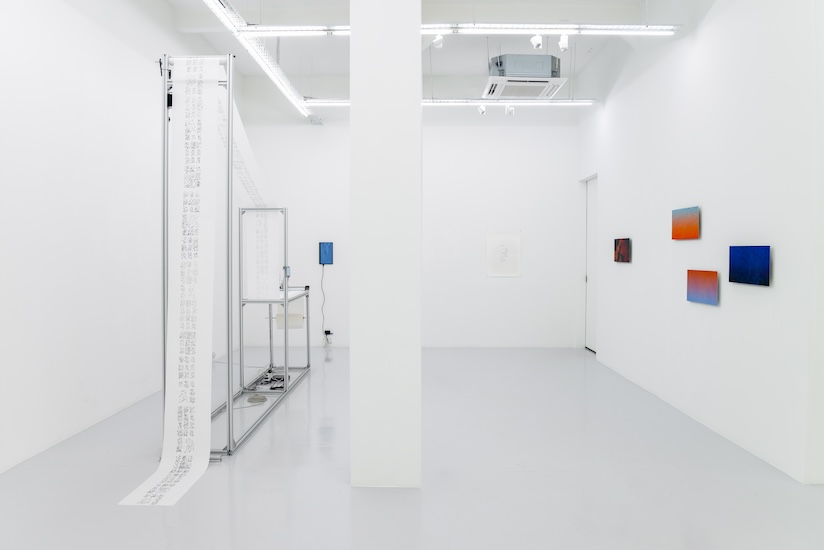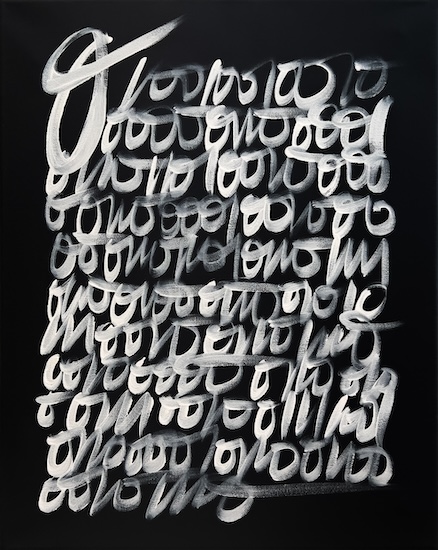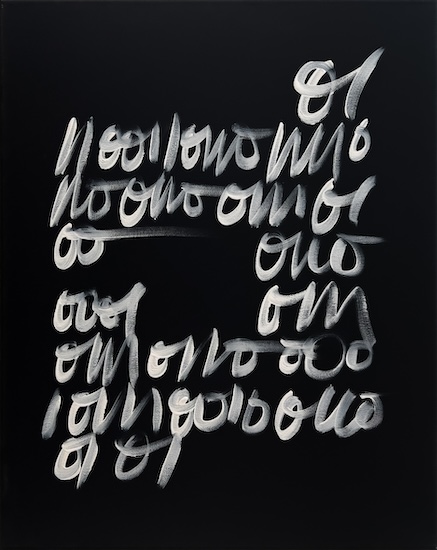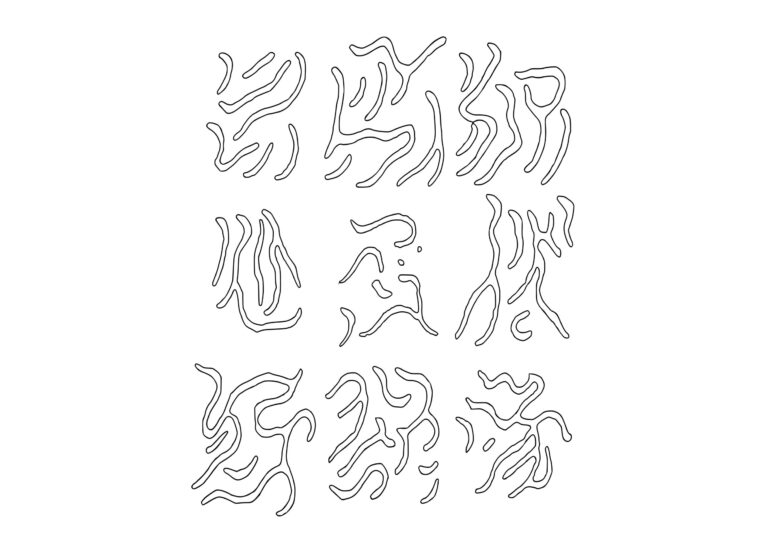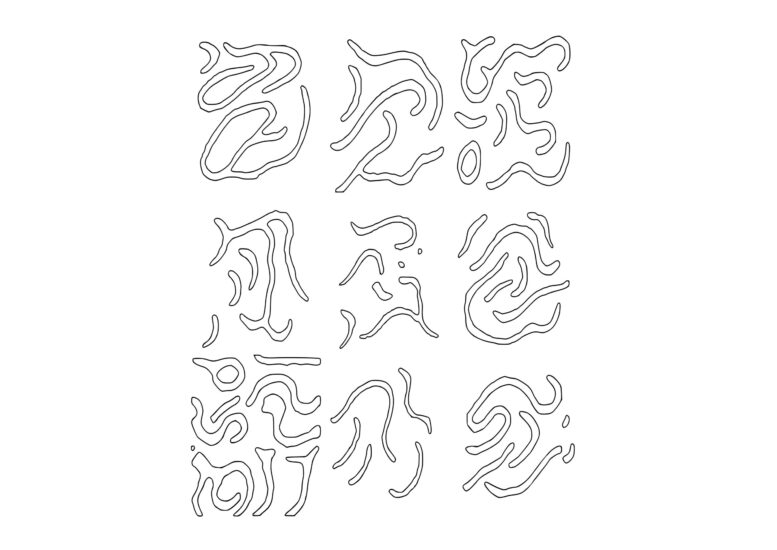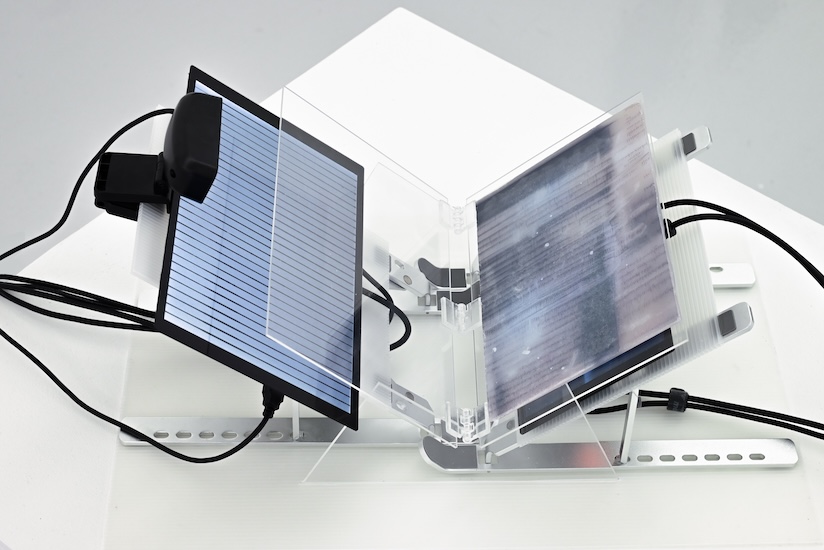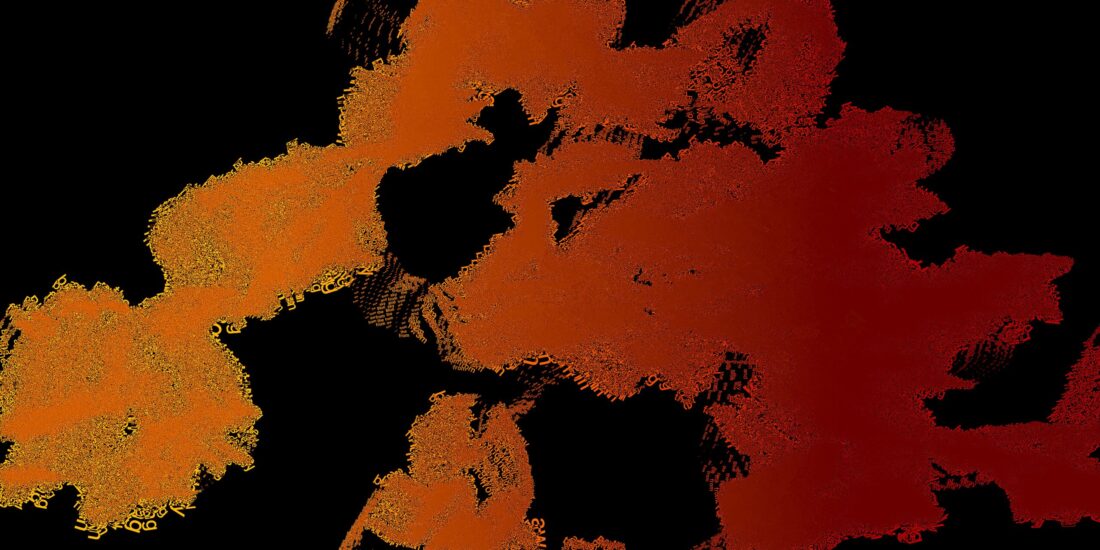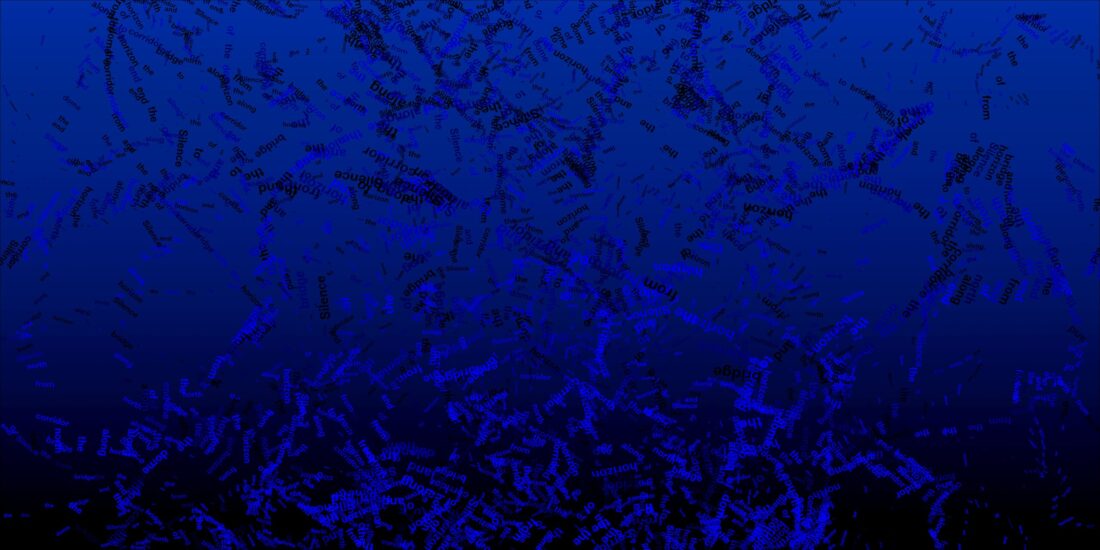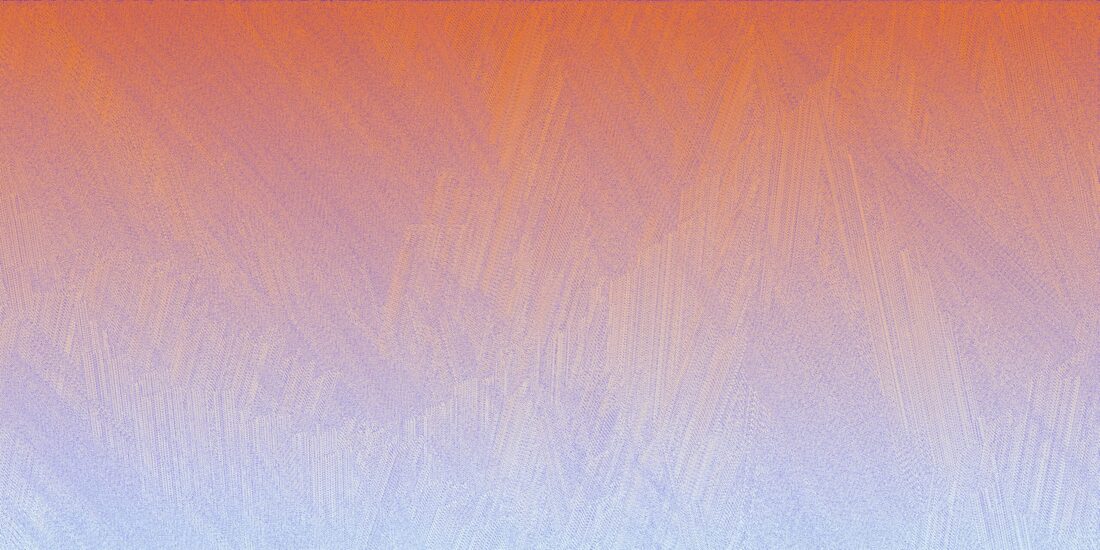Ames Yavuz is excited to present Paratext, a group exhibition in which 7 new media artists map out novel ways of engaging with text as image–as symbols, as signs, as poetry.
The concept of ‘paratext’ was formalised in the 1980s by French literary theorist Gérard Genette who coined the term to refer to textual and visual material that surrounds the main text. It can be information directly accompanying the text, such as how it is laid out on a page, or it can be material even outside of the published matter itself. Paratext has the ability to aid and shape one’s reading and receiving of a text and is a significant threshold to introduce a text to the reader. In recent years, the shapes in which paratexts have taken have shifted drastically. In a time where our lives are increasingly mediated by algorithms and screens, our relationships to text have evolved greatly—as has the paratext that frames us.
The exhibition brings together the works of seven artists—Emily Edelman, Jo Ho, Raven Kwok, Kapilan Naidu, Ong Kian Peng, Andreas Schlegel, and Sasha Stiles, who are all keenly interested in glyph, type, poetry and text. Their works consider how new technologies can be co-writers to our words, as well as mediators and translators to how our texts appear. Building on the rich and diverse history of text as image, these artists engage with autonomous systems, generative software, machine intelligence and more, reflecting upon the expanding ways in which we can experience word as image today.
Repetition is a fundamental poetic device. It is one of the most marked features of poetry, and a primary method of creating a pattern through rhythm. Sasha Stiles’ REPETAE builds on this age-old history of repetition in oral and written tradition to repeat the phrase ‘poema pictura loqu’ns’ on top of itself through coded script. The phrase is taken from the ancient Greek poet Simonides of Keos and translates to “poetry is a speaking picture, painting a silent poetry”. In repeating and layering the phrase repeatedly across a digital screen, Stiles explores the spatial, temporal and philosophical dimensions of repetition as reinvention.
Ho similarly considers the effects of repetition and layering in text through the idea of palimpsests, where an original text has been erased, transposed and superimposed over time. Ho takes the imprints of texts she has co-written with machine learning onto a wax sculpture and presents a modern-day palimpsest sculpture for us to read.
In Kwok and Edelman’s works, the artists take the letters and texts as shapes and forms that can be reinterpreted and transformer into new kinds of communication. Kwok’s Glyphshift bends and folds each glyph, stretching it onto the next, and forming new shapes of text. Centered around the assertion of “hello world”, Glyphshift is a real-time generative artwork programmed using Processing and exemplifying Kwok’s technical finesse and playfulness. Taking glyphs as shapes one step further, Edelman’s Illuminated series builds on a typographic generative algorithm she created in 2021, built on the principles of asemic writing. Edelman combines her generative outputs with digital design to compose colourful and whimsical scores, inviting you to read her images for new meanings.
Similarly, Stiles and Ong consider text and poetry through symbols and codes. Stiles’ Cursive Binary series refers to binary code, a system used in digital computers where there are only two states, symbolised by 0 and 1. She combines something foundational to computer processing systems with cursive handwriting, an act and gesture that is very much rooted in the human and presence of the artist. Cursive Binary is thus a proposed language for transhuman communication, bridging the human and the machine. Meanwhile, Ong’s CLOUD SCRIPTS tap on a Daoist system of writing that dates to 400AD and is used to convey instructions to spiritual beings to achieve various functions. The artist expands on the asemic nature of cloud scripts as a way to communicate with the spiritual, while translating the teachings of the ancient scripture into marks and compositions executed by a machine.
Schlegel’s While Zooming in Closer to the Sea explores the visual qualities of text as they are materially and algorithmically manipulated. It builds on an earlier co-writing experiment in which the artist used a recurrent neural network (RNN) model to develop a short story. Employing the literary method of a cut-up technique, the text is reorganized into word fragments, lending towards new forms that extend with and beyond the text. Schlegel interprets the text with algorithms inspired by concepts of waves, patterns, randomness and noise.
In writing with the machine, one also must grapple with how differently the machine learns and interprets text. Naidu’s soliloquy_npl (Stochastic Philosopher) reflects upon the nature of Large Language Models (LLMs), which have come to dominate much of what we understand of machine learning in our lives today. LLMs are designed to parse and generate language linearly by predicting the next most likely word or word-segment in sequence, rather than grammar, context and meaning-making. The artist has constructed a custom software to reflect upon the probability-based foundations behind the LLMs that govern our lives today, and to question the role of language in expressing intelligence itself.

